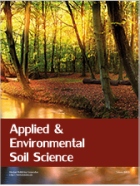Agricultural lands on the southern slopes of Mount Kilimanjaro comprise diverse and complex, smallholder cropping systems. This study explores the variation in soil fertility across different altitudes and their influence on cropping systems to recommend appropriate soil management practices. The study site spanned three altitudinal zones: upland (1438–1698 m), midland (901–1337 m) and lowland (680–834 m). Soil samples from 50 plots along the 25-km transect were analysed for chemical properties. Complementary data were collected to understand the cropping systems through six transect walks: two for each land use. Results indicate that soil organic carbon (SOC) and total N are highest in the upland and decrease with altitude, while exchangeable bases (Ca, Mg, K and Na) increase as altitude decreases. Soil pH is acidic at higher altitudes and alkaline at lower altitudes. Available P decreases with altitude, whereas available S shows no significant relationship with elevation. Overall, soil fertility status was better in the order of upland > midland > lowland, indicating a decreasing suitability trend for supporting crop production. Elevation significantly influenced the distribution patterns of soil nutrient levels (p < 0.05). Upland and midland zones employ farmyard manure application, crop residue retention and cultivation under shade to preserve soil moisture and enhance biomass accumulation. In contrast, the lowland relies heavily on inorganic fertilisers, with nutrient depletion evident due to biomass transfer to higher altitudes. Soil erosion is critical in all three zones, necessitating erosion control measures. Recommendations include soil nutrient amendments in the upland and midland by liming to increase soil pH and address P deficiency and in the lowland through reducing salinity, use of nitrogenous fertilisers, biomass retention and incorporating leguminous plants. Cultivation of crops adapted to the conditions along the three zones is also advocated. These findings aim to improve soil management and crop productivity, ensuring sustainable agricultural practices in the region.
DOI:
https://doi.org/10.1155/aess/3057259
Jumlah Kutipan Dimensi:

Tahun publikasi
2025
Penulis
Mpanda, M.; Majule, A.; Marchant, R.; Sinclair, F.; Aynekulu Betemariam, E.; Mwakalukwa, E.
Bahasa
English
Kata kunci
agroforestry, soil organic carbon, tropical soils, soil management, agricultural lands, soil fertility, cropping systems, land use, soil organic matter
Geografis
Tanzania
















